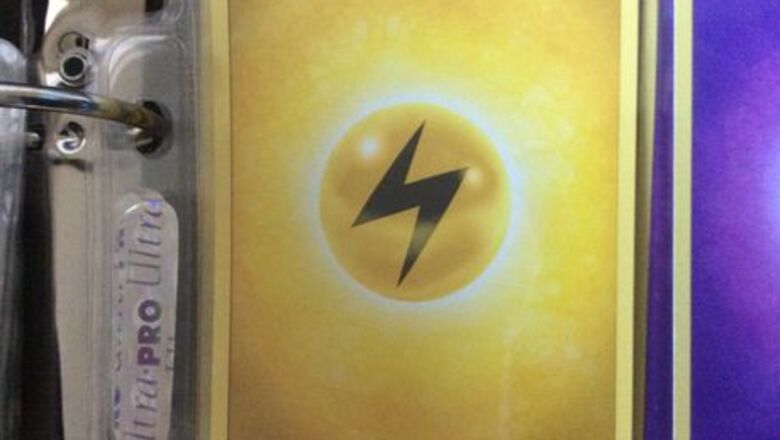
views
Attacking Your Opponent’s Pokémon

Check and attach energy to your Active Pokémon. Almost all Pokémon have attack moves, which almost all cost energy. In order for you to use one of your Pokémon’s moves, you must have the right amount and type of energy attached to that Pokémon. You can find the energy cost at the left side of the attack name. If you do not have energy in your deck, there is no way to attack, or win, at the game. You will see some energy cost with a white star symbol. That means you can make a random energy choice and attach it to that Pokémon. It does not matter what it is. If you see a symbol with a specific picture, like a fighting energy or a lightning energy, however, you must have that specific energy attached to your Active Pokémon. You may see some symbols as a grey, blank circle. This means you do not need an energy attached to the Pokémon; you can use the move directly!
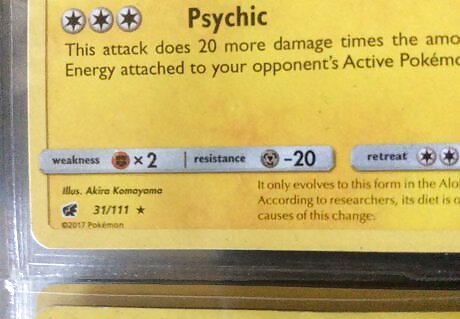
Check your opponent’s Active Pokémon's Resistance and Weakness. Some Pokémon have a Weakness or Resistance to certain types of Pokémon. This can be found at the lower-left corner of the Pokémon card. If you attack with a Pokémon type that is your opponent’s Active Pokémon’s Weakness, than the attack does more damage. If it is a type that is your opponent’s Active Pokémon’s Resistance, than the attack does less damage. If your opponent’s Pokémon’s happens to do a move that does damage to your Benched Pokémon, than Resistance and Weakness do not apply, unless stated otherwise.

Use Abilities, Poké-Bodies, and Poké-Powers. Some Pokémon (mostly Stage 1s and a Stage 2s) have these special powers. These can be used as many times as you want, unless your Pokémon’s power states otherwise. Before you attack, try to use your special power, for they can help you. Be sure to read the power carefully. Be sure to announce the power you are using. Unlike attacks moves, powers don’t require energies in order to use them. You can use them freely.
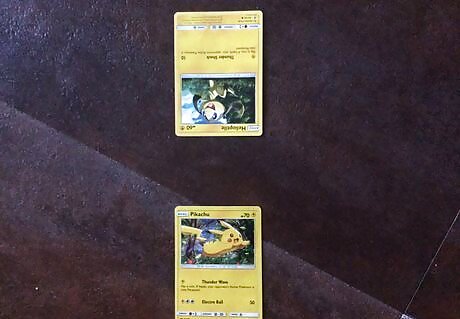
Attack and end your turn. When you attack, put down one damage counter on your opponent’s Pokémon for each 10 damage your Active Pokémon’s attack does. Some attacks have instructions at the bottom. Read that first before you attack, for it could be something you need to do before you attack. If a Pokémon has total damage to its HP (life points) or more, it is automatically Knocked Out. Put the Pokémon that was Knocked out, and all cards attached to it, in the discard pile. When you Knock Out your opponent’s Pokémon, you get one of your prize cards. If your opponent does not have any Benched Pokémon to play, you automatically win the game. If your opponent does have Pokémon in plays, but you managed to take your last prize card, you also win the game. If you knock out a GX Pokémon, you get two prize cards! When you attack, you do not discard your energy needed for the attack, unless stated otherwise on the attack move
Dealing with Special Conditions
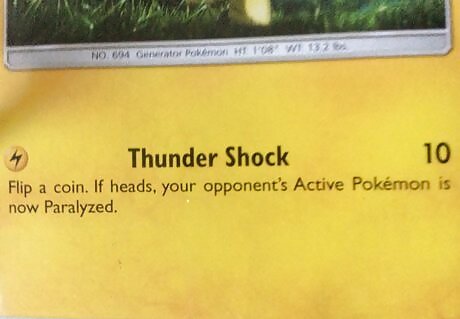
Deal with Special Conditions. Some Pokémon attacks, or abilities, leave their opponent’s Active Pokémon Asleep, Burned, Poisoned, Paralyzed, or Confused. Each one is handled differently.
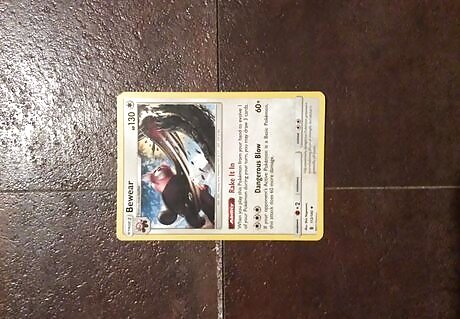
Turn it counterclockwise, if your Pokémon is asleep. That Pokémon cannot retreat or attack. In turn transitions, flip a coin. If it is heads, the Pokémon is now awake. Turn the Pokémon card back to its regular position. If tails, it stays asleep.
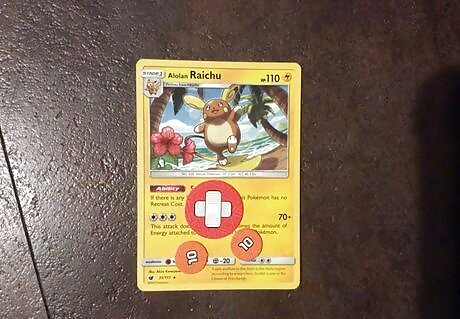
Put a Burned marker on it (the bandage marker), if your Pokémon is Burned. Between turns, put two damage counters on the Burned Pokémon. Then, that Burned Pokémon’s owner flips a coin. If heads, the Pokémon is no longer Burned, and you can remove the Burned marker. If tails, it stays Burned. This is the Sun and Moon rule. The regular rule is between turns, you flip a coin. If heads, no damage is done, but still has the Burned condition in effect still. If tails, that’s when you put two damage counters. You have to retreat it in order to get rid of the Burned condition in this rule; the Sun and Moon rule doesn’t require that. Both are very similar, though.
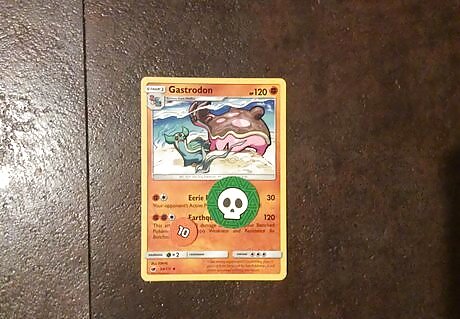
Put a Poison marker on it (the skull marker), if your Pokémon is Poisoned. Between turns, put one damage counter on it. Then, the owner of the Poisoned Pokémon flips a coin. If heads, the Pokémon is not Poisoned anymore, and you can remove the Poisoned marker. If tails, it stays Poisoned.
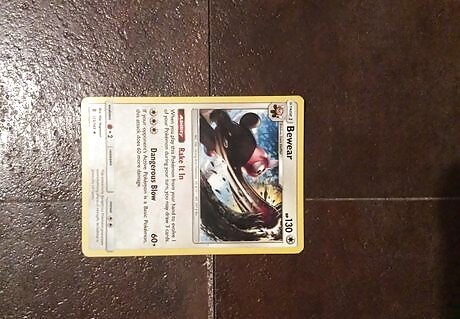
Turn it clockwise, if your Pokémon is paralyzed. That Pokémon cannot attack or retreat. If the Pokémon was paralyzed at the owner’s beginning of their turn, then the paralyzed Pokémon will return to normal at the end of the owner’s turn.
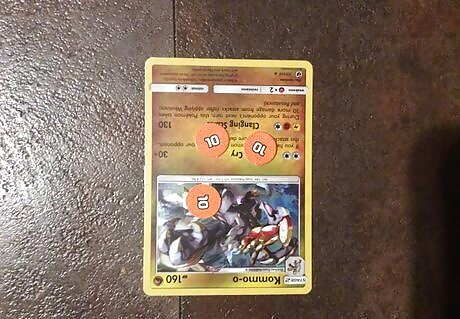
Turn your Pokémon upside-down, if your Pokémon is Confused. If the owner wants to attack with their Confused Pokémon, the owner must flip of coin. If heads, the attack works normally. If tails, the attack does nothing, and the Confused Pokémon takes 30 damage (three damage counters). All Special Conditions are removed when a Pokémon returns to the Bench. Paralyzed and Asleep are the only ones that don’t allow you to retreat. Special Conditions are also removed by Evolving your Pokémon, unless stated otherwise. Since Asleep, Confused, and Paralyzed rotate your Pokémon, whichever one accrued recently (last) is the only one that is still in effect.
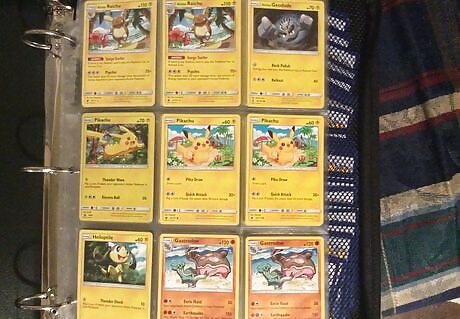
Become a Pokémon master! Now that you know how to attack, you can win battles with ease. Challenge your friends and family, and show off your skills!













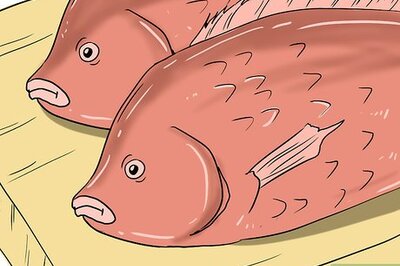
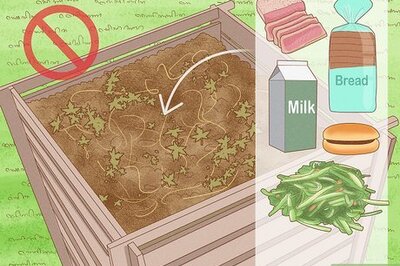



Comments
0 comment